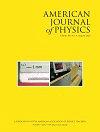Linewidth measurement of external cavity lasers
IF 0.8
4区 教育学
Q3 EDUCATION, SCIENTIFIC DISCIPLINES
引用次数: 0
Abstract
Narrowband laser sources are used in applications that require high-precision or stable optical frequency. Such applications include high-resolution spectroscopy, long-distance measurement, and coherent optical communication. The linewidth of a laser is a direct measure of the laser's stability; therefore, characterization of laser linewidth is essential. In practice, however, determining a laser's linewidth is not a trivial task and typically requires expensive equipment or a complex experimental arrangement. This paper presents a straightforward, low-cost method based on unbalanced interferometry, which allows us to determine the visibility of fringe patterns as a function of the optical path difference and, consequently, the linewidth of the laser. As a test laser, we use a tunable external cavity laser source at around 780 nm, where an interference filter is employed for wavelength selection. Data obtained by applying the interferometric technique to this laser and the analysis of these data, along with the resulting linewidth value, are presented. Given that the described measurement setup is inexpensive, straightforward, and pedagogically accessible, it is well-suited for an instructional physics laboratory experiment and will also be of interest to laboratory researchers.外腔激光器的线宽测量
窄带激光源用于需要高精度或稳定光频的应用领域。这类应用包括高分辨率光谱学、长距离测量和相干光通信。激光器的线宽是激光器稳定性的直接衡量标准;因此,激光器线宽的表征至关重要。但实际上,测定激光器的线宽并非易事,通常需要昂贵的设备或复杂的实验安排。本文介绍了一种基于不平衡干涉测量法的简单、低成本方法,通过这种方法,我们可以确定作为光路差函数的条纹图案可见度,从而确定激光器的线宽。作为测试激光器,我们使用了波长约为 780 nm 的可调谐外腔激光源,并使用干涉滤波器进行波长选择。本文介绍了对该激光器应用干涉测量技术所获得的数据、对这些数据的分析以及由此得出的线宽值。鉴于所述测量装置成本低廉、简单明了、易于教学,因此非常适合物理实验室教学实验,实验室研究人员也会对其感兴趣。
本文章由计算机程序翻译,如有差异,请以英文原文为准。
求助全文
约1分钟内获得全文
求助全文
来源期刊

American Journal of Physics
物理-物理:综合
CiteScore
1.80
自引率
11.10%
发文量
146
审稿时长
3 months
期刊介绍:
The mission of the American Journal of Physics (AJP) is to publish articles on the educational and cultural aspects of physics that are useful, interesting, and accessible to a diverse audience of physics students, educators, and researchers. Our audience generally reads outside their specialties to broaden their understanding of physics and to expand and enhance their pedagogical toolkits at the undergraduate and graduate levels.
 求助内容:
求助内容: 应助结果提醒方式:
应助结果提醒方式:


